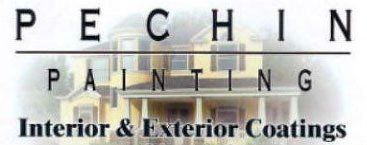Pechin Painting Frequently Asked Questions
Over 40 Years' Experience | Customer Satisfaction Guaranteed | Competitive Rates
Over 40 Years' Experience
Customer Satisfaction Guaranteed
Competitive Rates
Hours:
Pechin Painting FAQs
Have an interior and exterior painting-related question? We have the answer. Check out these FAQs and give us a call today for more information!
-
How long have you been in the industry?
Our company has been serving clients since 1978, bringing nearly 40 years of experience to the table. Over the decades, we’ve gained the insight and expertise needed to consistently surpass our customers’ expectations.
-
What type of paint do you use?
We use top-tier brands like Sherwin-Williams and Benjamin Moore, leaders in the paint industry known for their quality and reliability. These companies invest heavily in research and testing to ensure their products meet the highest standards before reaching the market. The result is a beautiful, long-lasting finish that outperforms lower-cost alternatives. Of course, if a customer prefers a different brand, we're happy to accommodate their request.
-
What is your painting process?
We’ve developed a smooth and efficient approach to every painting project. From the first discussion to the final cleanup, here’s how we typically manage the process:
- Initial Phone Consultation – Our first conversation typically focuses on understanding the scope and details of the project. Once we have a clear idea of the client’s needs, we’ll set up an in-person meeting.
- On-Site Meeting – During this visit, we’ll walk through the areas to be painted, assess the condition of the surfaces, and determine the necessary prep work, such as patching, sanding, or repairs. We’ll also take measurements and photos to ensure accuracy in our planning and estimates.
- Proposal Presentation – Once we’ve gathered all measurements, we calculate the estimated timeline and the materials required for the job. These details are compiled into a formal proposal. When the client approves and signs the proposal, it becomes a contract, and we move forward with the project.
- Surface Preparation – Proper prep work is critical to a lasting finish. Surfaces must be clean, dry, and smooth for the paint to adhere correctly. This step includes cleaning, patching, sanding, and other necessary repairs to ensure optimal results.
- Painting – With prep complete and all furnishings protected or removed, our team begins the painting process. While some applications may need just one coat, most areas receive two for full coverage and a professional finish. We pay close attention to every detail, including walls, ceilings, trim, and more, to deliver a flawless result.
- Project Close-Out – At the end of the project, we conduct a walkthrough with the client to review each area and confirm their satisfaction. We also make sure the space is left spotless, removing all materials, equipment, and debris, so it looks as clean and orderly as when we arrived.
-
How do you protect the space during the project?
For exterior projects that require pressure washing, we handle that first to ensure a clean surface. Afterward, we take careful steps to protect any areas that shouldn’t come into contact with paint. This includes covering large items with tarps and masking windows and doors. We also use drop cloths or tarps to safeguard landscaping, walkways, and brickwork. Indoors, we make sure floors, furniture, and fixtures are fully protected before any painting begins.
-
How soon can my painting project be completed?
The timeline depends on the size and complexity of the job. Smaller or straightforward projects can often be finished quickly, even within a single day. Larger commercial or exterior projects may take several days or up to a week, especially if weather becomes a factor. For smaller jobs, our team arrives fully equipped and ready to complete the work efficiently. We schedule projects to be completed on consecutive weekdays (Monday through Friday) to keep everything on track.
-
Why do painting bids vary so much between companies?
Price differences often come down to the level of quality, detail, and care put into the work. Thorough surface preparation, such as proper cleaning, repairs, sanding, and priming, takes significantly more time and effort than a quick pressure wash and scrape. Most of the cost in a painting project comes from labor and prep work, not just the paint itself. As with many services, the saying holds true: you generally get what you pay for.
-
Are higher-priced paints really better?
While a higher price doesn’t always guarantee a better product, in the case of premium paints, the added cost often reflects higher-quality ingredients designed to enhance both durability and appearance. These formulations typically provide better coverage, a longer-lasting finish, and superior resistance to wear. Although they cost more upfront compared to budget brands, their longevity and performance can actually save you money over time by reducing the need for frequent repaints.
-
What are the warning signs of a poor paint job?
- A major red flag is when a painter skips or rushes through the prep work. Inexperienced or careless contractors often cut corners here to save time, but proper preparation is essential for a lasting finish.
- Another warning sign is painting under the wrong conditions, whether it's too hot, too cold, too humid, or too dry. Professional painters know that ideal environmental conditions are critical for proper adhesion and a smooth result.
- Using the wrong type of paint or finish is another common issue. Low-quality products or inappropriate finishes, like using a flat paint in high-traffic areas that require a more durable, washable sheen, can lead to problems down the line.
- Poor application techniques are also telltale signs of a bad job. Streaks, drips, uneven coverage, and visible brush or roller marks all point to a lack of skill or attention to detail.
- Lastly, if the painter leaves the worksite messy or fails to clean up properly, it’s a strong indicator of an unprofessional approach overall.

Share On: